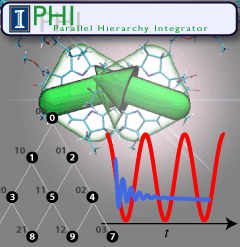Highlights of our Work
2025 | 2024 | 2023 | 2022 | 2021 | 2020 | 2019 | 2018 | 2017 | 2016 | 2015 | 2014 | 2013 | 2012 | 2011 | 2010 | 2009 | 2008 | 2007 | 2006 | 2005 | 2004 | 2003 | 2002 | 2001
Quantum mechanics rules all natural processes, but is manifested most strongly when acting on the lightest particles, namely the well-known electrons. To study quantum effects physicists routinely resort to very low temperature, that of liquid helium. Amazingly, living systems seem to exploit quantum effects for their benefit, but do so at temperatures typical for life, namely around room temperature or warmer. A particularly important case is photosynthetic light harvesting where so-called quantum coherence plays a critical role when electrons in assemblies of chlorophylls become excited by sun light and the excitation energy is harvested by utilizing it to charge photosynthetic membranes. In order to understand how photosynthesis can exploit room temperature quantum effects one needs to know how the temperatures, which are much higher than those in the physics laboratories where liquid helium is employed for cooling, affect electron behavior. The knowledge can be gained by so-called dissipative quantum mechanical descriptions, but the needed computer calculations are extremely demanding. To address this demand, researchers have developed the software PHI that uses the power of parallel computers, as described in a recent report. PHI has already been used to understand how many chlorophyll molecules act together to absorb sunlight among themselves and let the excitation migrate between chlorophylls to so-called reaction centers where the excitation energy is converted into a membrane potential. The overall light harvesting process has been described in various reports (1, 2,
3) and in a review (4). The PHI software can be obtained from our web site. More information on PHI is available here.




